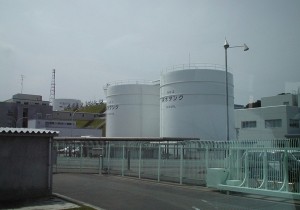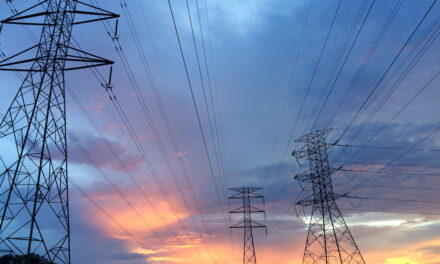- Tahoe’s Nevada Beach Tops the List of Hard-to-Book Campgrounds - 07/17/2024
- Cannabis Watershed Protection Program Cleans Up Illegal Grow Sites - 07/10/2024
- French Fire - 07/05/2024

The 2011 Fukushima nuclear disaster did cause many nations to reconsider their nuclear commitments, but many countries are still looking to nuclear power as a way to increase energy production without adding to greenhouse gas emissions. Photo: Kawamoto Takuo
I thought Japan’s 2011 Fukushima nuclear plant meltdown would have sealed nuclear power’s fate, but I keep hearing otherwise. Can you enlighten?
— Jacob Allen, New York, NY
The 2011 Fukushima nuclear disaster did cause many nations to reconsider their nuclear committments, though many European countries—Switzerland, Belgium, Austria, Germany, Italy, Spain and Sweden—had already begun phasing out nuclear power decades earlier. After Fukushima, Germany, Belgium and Switzerland all moved to decommission their nuclear facilities altogether by 2022, 2025 and 2034 respectively.
Japan’s nuclear program, which provided 30 percent of the country’s electricity needs before the March 2011 disaster, is now essentially non-operational due to public safety concerns. Furthermore, Japan announced in November 2013 that, due to the shuttering of Fukushima and other nuclear facilities, it was backpedaling its on prior commitments to cut greenhouse gas emissions 25 percent from 1990 levels.
Here in the U.S., Fukushima has not had any major effect on our nuclear industry. No nuclear plants have been closed, license extensions for existing facilities continue to proceed, and the federal Nuclear Regulatory Commission (NRC) has even greenlighted construction of two new reactors at a nuclear power plant in Georgia. But public concerns over the safety of nuclear power and what to do with spent fuel indicate that nukes will likely become a smaller and smaller slice of the U.S. energy pie moving forward.
Elsewhere, however, many countries are looking to nuclear power as a way to increase energy production without adding to greenhouse gas emissions. Casey Research reports that developing countries are increasingly relying on it to supplement coal and other fossil fuels. The International Energy Agency predicts global electricity demand will grow 70 percent by 2035, with the majority of the increase coming from developing countries—China and India combined will account for half of the projected growth.
“Serious pollution problems mean that those developing countries cannot produce all that electricity by burning coal,” says Amir Adnani, CEO of Uranium Energy Corporation, a uranium mining company. “The plans to develop nuclear power in China and other countries are very much driven by a set of realities that is very different and very acute. People are dying every year in China, literally choking to death, because of all the toxins that are being put into the environment by burning coal.”
China now has 17 nuclear plants in operation and another 29 underway. India has 20 plants running and seven more being built. And the Russian Federation operates 33 and has another 11 in the works. So while it might be premature to call it a “nuclear renaissance,” much of the world doesn’t seem too worried about what happened at Fukushima. Indeed, nuclear power looks like it could be around for a long time.
According to MIT’s Center for Energy and Environmental Policy Research, the real impact of Fukushima has been to remind us all to take safety much more seriously: “While the international nuclear industry appears so far to have dodged being hit square in the head by a bullet from Fukushima, it should not expect that it will get another chance if there is another serious nuclear accident anywhere in the world.”
CONTACTS: Casey Research, www.caseyresearch.com; MIT Center for Energy and Environmental Policy Research, http://web.mit.edu/ceepr/www.
EarthTalk® is written and edited by Roddy Scheer and Doug Moss and is a registered trademark of E – The Environmental Magazine (www.emagazine.com). Send questions to: earthtalk@emagazine.com.













